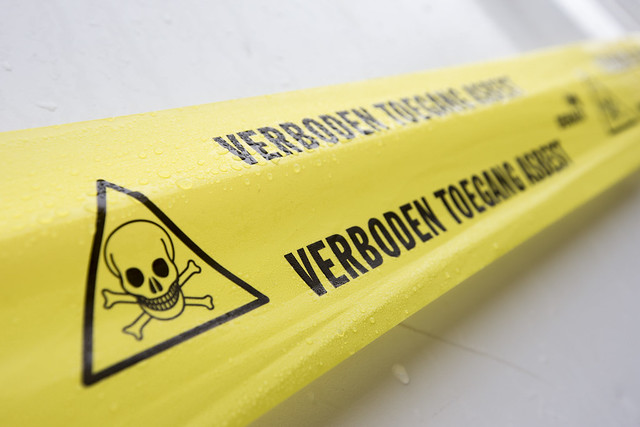1. Introduction
The term asbestlint might sound unusual, but it is closely tied to one of the most dangerous materials in modern history—asbestos. Derived from the words “asbest” (the German and Dutch term for asbestos) and “lint” (meaning rope, tape, or fibrous strands), asbestlint typically refers to asbestos fibers in the form of tape, rope, or lint-like dust.
While asbestos has been banned or heavily restricted in many countries, the dangers of asbestlint remain relevant today. Countless older buildings, industrial sites, and products still contain asbestos-based materials, which can release hazardous fibers into the air when disturbed. Once inhaled, these microscopic fibers can cause life-threatening diseases such as mesothelioma, lung cancer, and asbestosis.
Understanding what asbestlint is, where it can be found, and how to manage its risks is crucial not only for professionals in construction and manufacturing but also for homeowners and the general public.
2. What is Asbestlint?
Asbestlint refers to asbestos tape, rope, or fibrous asbestos dust created when asbestos-containing materials break down or are disturbed. Historically, asbestos was hailed as a “miracle mineral” due to its heat resistance, strength, and insulation properties. This made asbestlint a widely used material for insulation, sealing, and fireproofing in both residential and industrial settings.
From wrapping hot water pipes to sealing gaskets in furnaces, asbestlint played a significant role across industries. Unfortunately, its fibrous structure, which gave it strength, also created one of its deadliest traits: when damaged, the fibers break into microscopic particles that can be inhaled and cause severe health issues.
As regulations tightened in the late 20th century, the use of asbestlint and other asbestos-based products declined. However, millions of older structures worldwide still contain it, making awareness and management critical.
3. Origins and Terminology
The etymology of “asbestlint” helps clear up confusion. In Dutch and German, “asbest” means asbestos, while “lint” translates to ribbon, rope, or tape. The term often describes asbestos rope or tape used for insulation or sealing.
Asbestos was manufactured into various forms:
- Asbestos tape/rope – for pipe insulation and sealing joints.
- Asbestos cloth – for protective gear and fire blankets.
- Asbestos gaskets – for industrial machinery.
Because the term “asbestlint” is not commonly used in English literature, many people mistakenly assume it refers to a unique substance. In reality, it is simply a form of asbestos product—making it just as dangerous as other asbestos-based materials.
4. Applications in Different Industries
Asbestlint found widespread applications across industries before regulations limited its use:
- Construction – Used in insulation, roofing shingles, cement sheets, and flooring tiles due to its durability and fireproof nature.
- Manufacturing – Applied in heat-resistant gaskets, seals, and tapes for industrial machinery.
- Automotive – Found in brake linings, clutches, and gaskets, valued for withstanding high temperatures.
- Electrical – Utilized as non-conductive insulation for wiring, appliances, and switchboards.
These diverse applications highlight why asbestos was once considered indispensable—and why its legacy continues to affect so many industries today.
5. Health Risks and Concerns
The most critical danger of asbestlint lies in its fibrous dust. When inhaled, asbestos fibers lodge deep in the lungs, where the body cannot expel them. Over years or even decades, this leads to severe diseases, including:
- Asbestosis – Scarring of the lung tissue, causing breathing difficulties.
- Mesothelioma – A rare but deadly cancer of the lung or abdominal lining.
- Lung Cancer – Strongly linked to asbestos exposure, especially in smokers.
- Pleural Disorders – Such as pleural plaques and thickening.
Because symptoms often take 20–50 years to appear, many victims are diagnosed late, making prevention and early awareness essential.
6. Common Sources of Exposure
Asbestlint is most dangerous when fibers become airborne. Common sources include:
- Old buildings (pre-1980s): Insulation, roofing, and flooring materials often contained asbestos.
- Industrial sites: Shipyards, textile mills, and factories were major hotspots.
- Renovation or demolition: Cutting, drilling, or sanding asbestos-containing materials releases fibers.
- Secondary exposure: Workers unknowingly brought asbestos fibers home on clothes, exposing family members.
Awareness of these sources is the first step in preventing unnecessary exposure.
7. Detection and Handling of Asbestlint
Identifying asbestos materials is not simple. While visual inspection may raise suspicion, only professional testing can confirm the presence of asbestos.
Common testing methods include:
- Polarized Light Microscopy (PLM) – For analyzing bulk samples.
- Transmission Electron Microscopy (TEM) – Highly sensitive, detecting tiny fibers.
- Air Sampling – Measures airborne fiber concentration.
Handling asbestos is not a DIY task. Professionals follow strict protocols, including containment, wet-removal techniques, and personal protective equipment (PPE). Disturbing asbestos without proper training can worsen exposure risks.
8. Legal Regulations and Responsibilities
Governments worldwide have implemented strict regulations to protect public health from asbestos hazards:
- U.S.: The EPA and OSHA enforce exposure limits, abatement rules, and workplace safety standards.
- European Union: A complete ban on asbestos use and strict demolition guidelines.
- Developing Nations: Some still allow asbestos use, creating global health disparities.
Employers have a legal responsibility to protect workers, conduct air monitoring, and provide PPE. Failure to comply can result in lawsuits, compensation claims, and reputational damage.
9. Environmental Impact and Disposal
Asbestlint is not just a workplace hazard—it is also an environmental threat. Improper disposal can contaminate soil, water, and air, persisting for decades. Wildlife and surrounding communities face risks if asbestos fibers spread through erosion, wind, or water systems.
Safe disposal requires specialized facilities where asbestos waste is sealed, labeled, and handled according to environmental regulations. Dumping asbestos in regular landfills is illegal and dangerous.
10. Modern Solutions and Safe Alternatives
Thankfully, safer alternatives are replacing asbestlint across industries:
- Fiberglass – Strong, heat-resistant, and widely used in insulation.
- Mineral Wool – Provides thermal and acoustic insulation.
- Cellulose – Eco-friendly insulation made from recycled materials.
- Spray Foam – Energy-efficient and asbestos-free.
For existing asbestos materials, encapsulation (sealing fibers in place) is often safer than removal. Industries are also adopting better safety practices, air monitoring systems, and protective gear to minimize risks.
11. Awareness and Prevention Strategies
The key to managing asbestlint is awareness. Communities, workers, and homeowners must recognize the risks and take preventive steps:
- Public education campaigns about asbestos hazards.
- Mandatory workplace training on asbestos handling.
- Use of respirators, disposable clothing, and HEPA vacuums in high-risk environments.
- Community inspections of older schools, offices, and homes.
The more informed people are, the lower the chances of accidental exposure.
12. Future Outlook
The global movement is clear: phase out asbestos completely. Many countries already ban it, while others are transitioning toward safer alternatives. Research into nanotechnology-based filters, advanced detection systems, and eco-friendly insulation materials is paving the way for a future without asbestos.
Still, the challenge remains: managing the legacy of asbestos in millions of existing buildings. Vigilance, regulation, and innovation will shape the world’s ability to finally eliminate the dangers of asbestlint.
13. FAQs
Q1. What is asbestlint?
Asbestlint refers to asbestos tape, rope, or lint-like asbestos fibers released when asbestos-containing materials deteriorate.
Q2. Why is it dangerous?
Inhaling asbestos fibers can cause fatal diseases such as mesothelioma, lung cancer, and asbestosis.
Q3. Where can it still be found?
In older buildings, industrial equipment, automotive parts, and insulation installed before the 1980s.
Q4. Can I remove it myself?
No. Asbestos removal should only be handled by licensed professionals to avoid exposure.
Q5. Is any exposure level safe?
No. Experts agree there is no safe level of asbestos exposure. Even minimal contact can be harmful.










